|
Notes: Rossett was located on the Great Western Railway’s (GWR) main line that linked Birmingham to the River Mersey at Birkenhead via Chester. The section of line on which Rossett was situated had been opened by the Shrewsbury & Chester Railway (S&CR) on 4 November 1846. At that time it stretched only from Saltney Junction (near Chester) and a temporary station at Rhosymedre on the north side of the Vale of Llangollen. Almost two years later on 14 October 1848 the Rhosymedre to Shrewsbury section opened.
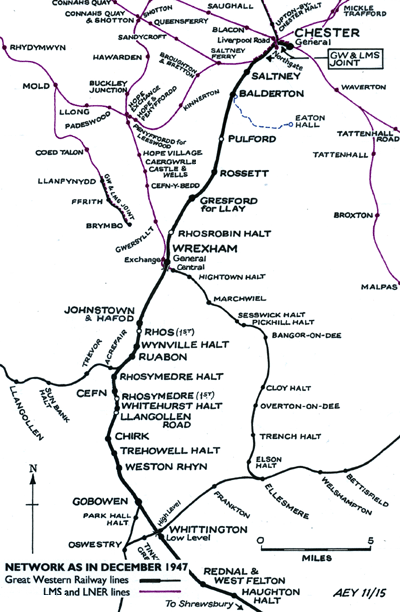 The station at Rossett was located on the west side of its village namesake on the north side of a level crossing that carried Station Road over the line. The station at Rossett was located on the west side of its village namesake on the north side of a level crossing that carried Station Road over the line.
The main facilities were on the up platform (Shrewsbury direction). The building was an example of what Biddle (1973) describes as ‘railway Tudor’ in coursed stone. From the two-storey northern section including the station house an office range extended southwards, both parts of the building having various gables sheltered by overhanging roofs and decorated with distinctive bargeboards and elaborate finials. Contrasting with the exuberance of the building was a somewhat primitive-looking flat awning, supported by unadorned columns, which sheltered the area in front of the single-storey section of the building.
On the down platform (Chester direction) the subsidiary building contained waiting and toilet facilities and its roofline was extended a short way over the platform, supported by simple brackets, to provide shelter.
Rossett was provided with goods facilities which included sidings and a goods shed.
At the time of opening the station was served by six trains in each direction on weekdays which ran between Chester and Wrexham. On 14 October 1848 the SO&CJR-promoted section of line opened between Rhosymedre and a temporary station at Shrewsbury and from that date passenger trains started to run to and from the latter. On 23 December 1848 a branch from Rossett to Oswestry opened and Rossett had direct services to and from the Shropshire town.
The March 1850 timetable showed four up and five down trains on Monday-to-Saturday. On Sunday there were two trains in each direction.
On 1 September 1854 the S&CR was taken over by the GWR. The GWR also took over the Shrewsbury & Birmingham Railway and in so doing created a route between the Midlands and the River Mersey in direct competition with the London & North Western Railway (click here to read more about the GWR take-over of the S&CR).
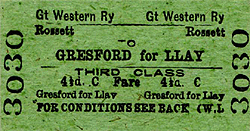 Under the GWR the line through Rossett became a busy trunk railway that carried express and local passenger trains and large volumes of freight. A Birmingham – Birkenhead express service was introduced on 1 May 1857 and a London Paddington – Birkenhead service on 1 October 1861. These were prestigious trains that called only at principal stations. Under the GWR the line through Rossett became a busy trunk railway that carried express and local passenger trains and large volumes of freight. A Birmingham – Birkenhead express service was introduced on 1 May 1857 and a London Paddington – Birkenhead service on 1 October 1861. These were prestigious trains that called only at principal stations.
In 1884 a signal box was opened at the south end of the down platform. It had 28 levers and controlled the main line, the level crossing and access to the goods yard which was enlarged about the same time. Sidings were extended as far south as Station Road and a weighing machine was installed.
To the north of Rossett the line was quadrupled with the installation of lengthy passing loops for both the up and the down lines. A signal box called Rossett North was built to control the northern end of the loops.
By December 1895 Rossett had eight up and seven down trains on Monday-to-Saturday as shown in the table below. Interestingly there were direct services to and from Liverpool Central Low Level via the under-river Mersey Railway which had opened in 1886. This was a short lived experiment by the GWR that had been made possible because of an extension of the line from Birkenhead to Rock Ferry in 1891 and to Liverpool Central in 1892. On Sunday there were two up and three down services.
Up Trains – December 1895 |
Destination |
Down Trains – December 1895 |
Destination |
8.31am |
Wolverhampton Low Level |
8.10am |
Birkenhead Woodside |
11.31am |
Shrewsbury |
8.51am |
Liverpool Central Low Level |
2.21pm |
Ruabon |
9.46am |
Chester |
4.35pm |
Wolverhampton Low Level |
2.19pm |
Birkenhead Woodside |
5.38pm |
Corwen |
5.55pm |
Chester |
6.22pm |
Hereford |
6.42pm |
Chester |
7.51pm |
Ruabon |
10.20pm |
Chester |
9.42pm |
Shrewsbury |
|
|
In 1903 Rossett sold 32,254 passenger tickets and it forwarded 58,687 parcels. The station dispatched 1,589 tons of goods and received 3,227 tons. Coal and coke deliveries to the station amounted to 2,998 tons and 91 wagons of livestock were handled. The 1904 Handbook of Stations showed Rossett was able to handle horse boxes, livestock, parcels and private carriages by rail. It had a 1 ton 10cwt lifting crane.
The July 1922 timetable showed eleven up and nine down trains on Monday-to-Saturday. On Sunday there were three services in each direction. In 1923 23,158 passenger tickets were sold: a significant drop when compared to the 1903 figure. More parcels were handled, however. The goods yard had also seen a decline in all goods types with the exception of minerals.
By 1933 passenger tickets sold had dropped to only 11,108 no doubt owing to bus competition. Parcel traffic had also decreased and in that year only 9.987 were handled.
On 1 January 1948 Rossett became part of British Railways [Western Region] (BR[WR]). The summer timetable for 1949 showed nine up and eleven down trains on Monday-to-Saturday. On Sunday there were two trains in each direction.
Up Trains - Summer 1949 |
Destination |
Down Trains - Summer 1949 |
Destination |
7.31am |
Shrewsbury |
7.44am |
Chester |
8.55am |
Barmouth |
8.36am |
Chester |
11.23am |
Gobowen |
9.06am |
Birkenhead Woodside |
1.32pm |
Pwllheli |
9.22am |
Birkenhead Woodside |
4.36pm |
Llangollen |
10.22am |
Chester |
6.05pm |
Barmouth |
12.04pm |
Birkenhead Woodside |
6.39pm |
Birmingham Snow Hill |
3.12pm |
Chester |
7.36pm |
Gobowen |
5.49pm |
Birkenhead Woodside |
10.10pm |
Oswestry |
6.27pm |
Birkenhead Woodside |
|
|
9.28pm |
Chester |
|
|
10.22pm |
Chester |
Rossett station was not fitted with British Railways’ totem signage neither by the Western Region nor by the London Midland Region into whose territory the station was transferred on 1 January 1963.
On 28 February 1960 the station signal box of 1884 closed as did the box at Rossett North. They were replaced by a new box located on the south side of the level crossing on the up side of the line.
Rossett was listed in the Reshaping of British Railways report of March 1963 (the ‘Beeching Report’) for closure. The formal proposal to close it was published on 18 November 1963, and the Minister of Transport, Ernest Marples, gave his consent on 11 September 1964. Closure to passengers took place on 26 October 1964.
The London Paddington – Birkenhead expresses, along with a number of other long distance services, ceased to run from 6 March 1967 which reduced the importance of the former GWR main line.
Rossett closed for goods services on 7 October 1968.
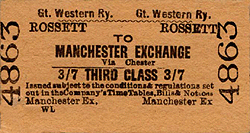 The station remained intact after closure and it was used by a number of special trains that were run for the nearby Moreton Hall Girls’ School. By the mid 1970s, however, the down platform had been demolished which meant that trains could depart from the station only in the up direction. The station remained intact after closure and it was used by a number of special trains that were run for the nearby Moreton Hall Girls’ School. By the mid 1970s, however, the down platform had been demolished which meant that trains could depart from the station only in the up direction.
In the 1980s an unsuccessful campaign was launched for the station to be reopened. On 2 February 1986 the line through Rossett was singled. The former down line was removed as were the Rossett loops to the north of the station. Rossett signal box and the level crossing were also closed.
The last Moreton Hall Girls’ School special ran in July 1989. A few years later the up platform edge was removed.
Following a period of passenger growth in the first decade of the twenty-first century the line became a double-track railway once again in 2016 from Rossett station to Saltney Junction and campaigns to reopen the station continued.
Tickets from Michael Stewart and route map by Alan Young
Sources:
- A Regional History of the Railways of Great Britain - Volume II North & Mid Wales - Peter E Baughan - David & Charles 1980.
- Encyclopaedia of British Railway Companies - Christopher Awdry - Guild Publishing 1990.
- Paddington to the Mersey - Dr R. Preston Hendry & R. Powell Hendry - Oxford Publishing Company 1992.
- Railway Passenger Stations in Great Britain - a Chronology - Michael Quick - Railway & Canal Historical Society 2009.
To see the
other stations on the Shrewsbury - Chester General line
click on the station name: Shrewsbury S&C, Leaton, Oldwoods Halt, Baschurch, Stanwardine Halt, Haughton Halt, Rednal & West Felton, Whittington Low Level, Weston Rhyn, Llangollen Road, Whitehurst Halt, Rhosymedre, Cefn, Rhosymedre Halt, Wynnville Halt, Johnstown & Hafod, Rhos, Rhosrobin Halt, Gresford, Pulford, Balderton and Saltney
|

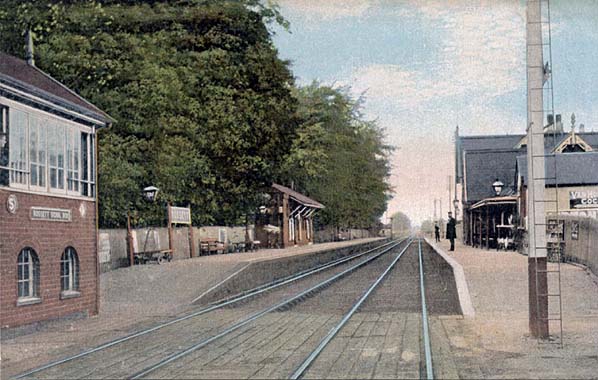
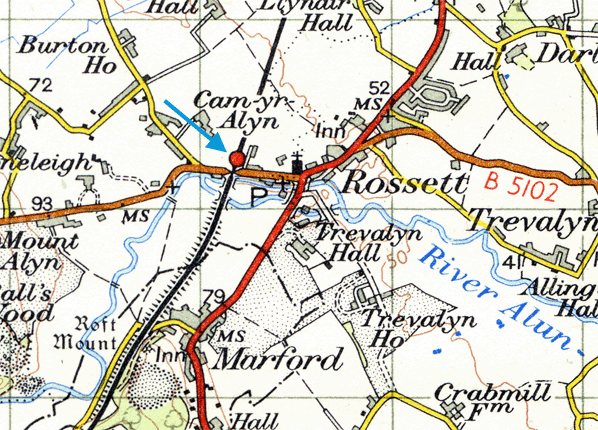
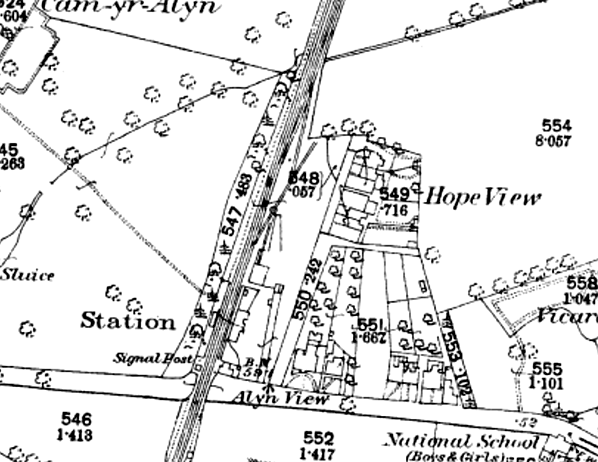
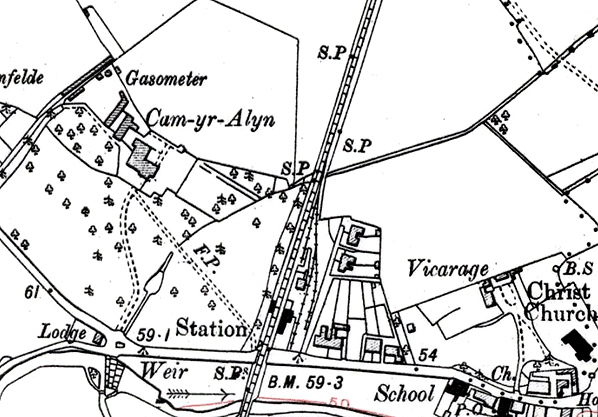
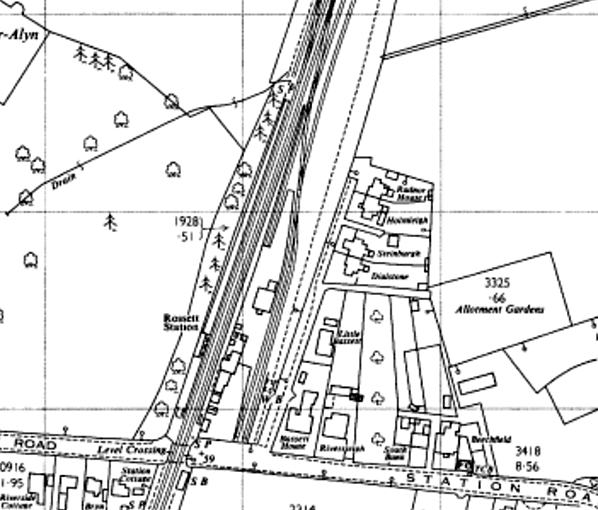
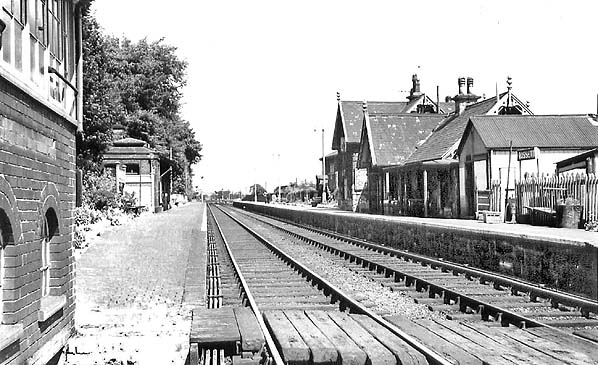
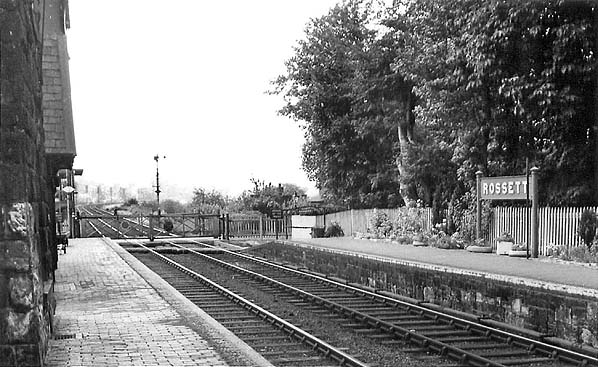
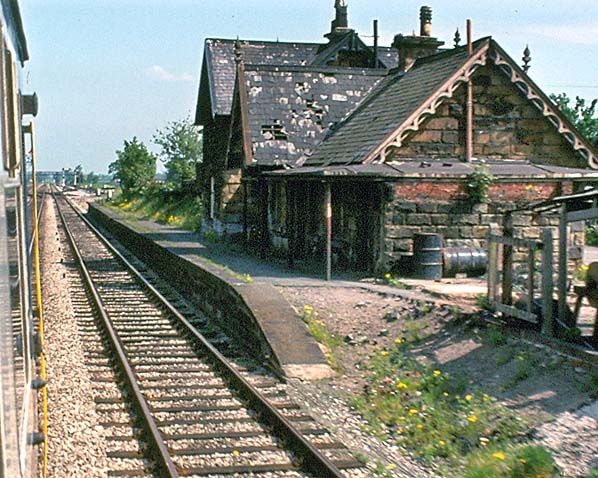
.jpg)
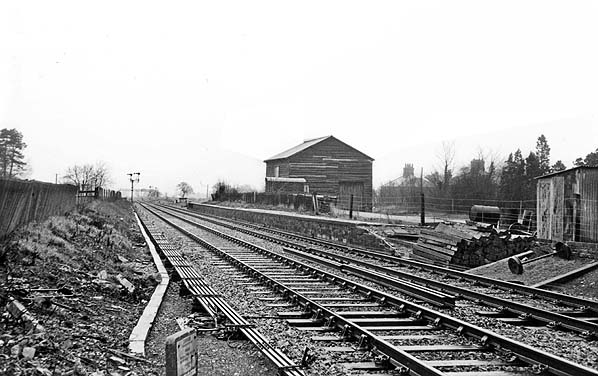
.jpg) Looking south at the site of Rossett station on 6 April 2012.
Looking south at the site of Rossett station on 6 April 2012..jpg)
 Home
Page
Home
Page
 The station at Rossett was located on the west side of its village namesake on the north side of a level crossing that carried Station Road over the line.
The station at Rossett was located on the west side of its village namesake on the north side of a level crossing that carried Station Road over the line.  Under the GWR the line through Rossett became a busy trunk railway that carried express and local passenger trains and large volumes of freight. A Birmingham – Birkenhead express service was introduced on 1 May 1857 and a London Paddington – Birkenhead service on 1 October 1861. These were prestigious trains that called only at principal stations.
Under the GWR the line through Rossett became a busy trunk railway that carried express and local passenger trains and large volumes of freight. A Birmingham – Birkenhead express service was introduced on 1 May 1857 and a London Paddington – Birkenhead service on 1 October 1861. These were prestigious trains that called only at principal stations.  The station remained intact after closure and it was used by a number of special trains that were run for the nearby Moreton Hall Girls’ School. By the mid 1970s, however, the down platform had been demolished which meant that trains could depart from the station only in the up direction.
The station remained intact after closure and it was used by a number of special trains that were run for the nearby Moreton Hall Girls’ School. By the mid 1970s, however, the down platform had been demolished which meant that trains could depart from the station only in the up direction. 